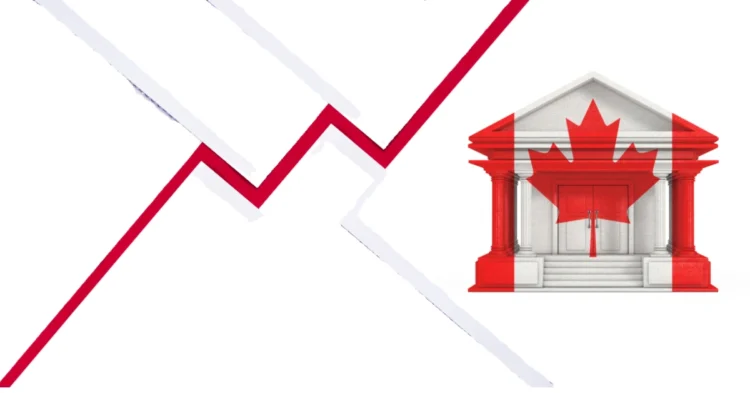The Canadian housing market has always been a dynamic landscape, and in 2025, homeowners and prospective buyers are grappling with a fresh wave of rising fixed mortgage rates. This shift, driven by a mix of economic pressures and global influences, has sparked widespread discussion about affordability and financial planning. Drawing from insights in a recent Canadian Mortgage Trends poll, this article explores the reasons behind the increase in fixed mortgage rates, its implications for Canadians, and strategies to navigate this evolving market.
Table of Contents
The Economic Forces Driving Rate Increases
Fixed mortgage rates in Canada are on an upward trajectory, influenced by a complex interplay of domestic and global economic factors. Understanding these drivers is key to grasping why borrowing costs are rising in 2025.
Bond Yields and Market Dynamics
The primary catalyst for rising fixed mortgage rates is the increase in Canadian government bond yields, particularly the five-year bond, which serves as a benchmark for fixed-rate mortgages. As bond yields rise in response to investor demand for higher returns, lenders adjust mortgage rates upward to maintain profitability. In early 2025, bond yields have climbed due to expectations of sustained economic growth and inflationary pressures.
Inflationary Pressures
Inflation remains a significant concern, with Canada’s Consumer Price Index (CPI) showing persistent upward trends in 2025. Higher inflation erodes purchasing power, prompting the Bank of Canada to maintain or adjust monetary policies that indirectly influence fixed mortgage rates. Lenders, anticipating tighter conditions, are preemptively raising rates to hedge against future risks.
Global Economic Influences
Canada’s economy is closely tied to global markets, particularly the United States. With the U.S. Federal Reserve signaling tighter monetary policies to combat inflation, Canadian financial institutions are following suit. The interconnected nature of global bond markets means that rising U.S. Treasury yields have a ripple effect, pushing Canadian bond yields—and consequently mortgage rates—higher.
Impact on Canadian Homeowners and Buyers
The rise in fixed mortgage rates is reshaping the financial landscape for Canadians, affecting both current homeowners and those aspiring to enter the housing market.
Challenges for New Buyers
For first-time homebuyers, higher fixed mortgage rates translate to increased borrowing costs, reducing affordability in an already competitive market. With home prices remaining elevated in urban centers like Toronto and Vancouver, many buyers are being priced out or forced to consider smaller properties or locations farther from city cores.
Implications for Existing Homeowners
Homeowners with fixed-rate mortgages nearing renewal face higher payments, potentially straining household budgets. Those who locked in lower rates during the low-rate environment of previous years may experience “payment shock” when renewing at current rates. Variable-rate mortgage holders, while not directly affected by fixed-rate trends, may also face uncertainty if the Bank of Canada adjusts its benchmark rate.
Market Sentiment from the Poll
A recent Canadian Mortgage Trends poll reveals growing concern among Canadians about rising rates. Respondents expressed worries about affordability, with many indicating they are delaying home purchases or exploring alternative financing options. The poll also highlighted a split in sentiment, with some optimistic about economic recovery driving the rate hikes, while others fear prolonged financial strain.
Strategies to Navigate Rising Rates
As fixed mortgage rates climb, Canadians can adopt several strategies to mitigate the impact and make informed financial decisions.
Locking in Rates Early
For those planning to buy or renew a mortgage, locking in a rate as soon as possible can provide certainty. Many lenders offer rate holds for 90 to 120 days, allowing buyers to secure current rates while shopping for a home, potentially avoiding future increases.
Exploring Shorter-Term Mortgages
Opting for shorter-term fixed mortgages, such as one- or two-year terms, can offer flexibility. If rates stabilize or decline in the near future, borrowers may benefit from lower rates upon renewal. However, this approach carries the risk of rates rising further.
Consulting Mortgage Professionals
Working with a mortgage broker can provide access to competitive rates and tailored advice. Brokers can help navigate the complexities of the market, compare lender offerings, and identify products that align with individual financial goals.
The Broader Housing Market Outlook
The rise in fixed mortgage rates is just one piece of the puzzle in Canada’s housing market, which continues to face challenges and opportunities in 2025.
Supply and Demand Pressures
Limited housing supply in major cities, coupled with strong demand, continues to drive home prices upward, exacerbating affordability issues. Rising rates may cool demand slightly, but without significant increases in housing stock, prices are unlikely to decline substantially.
Potential Policy Responses
The Bank of Canada and federal government are under pressure to address housing affordability. Potential measures, such as incentives for first-time buyers or policies to boost housing construction, could influence the market. However, any policy changes will need to balance economic growth with inflation control.
Long-Term Economic Trends
Looking ahead, economists predict that fixed mortgage rates may stabilize if inflation cools and global economic conditions stabilize. However, ongoing uncertainties, such as geopolitical tensions or supply chain disruptions, could sustain upward pressure on rates through 2025.
Preparing for a New Financial Reality
The rise in Canadian fixed mortgage rates in 2025 underscores the need for financial preparedness and adaptability. Whether you’re a homeowner facing renewal or a prospective buyer navigating a competitive market, understanding the factors driving rate increases is crucial. By staying informed, exploring strategic financing options, and seeking professional guidance, Canadians can better position themselves to thrive in this evolving economic landscape. The Canadian Mortgage Trends poll reflects a nation at a crossroads, balancing optimism for economic recovery with the realities of rising costs—a challenge that will shape the housing market for years to come.

